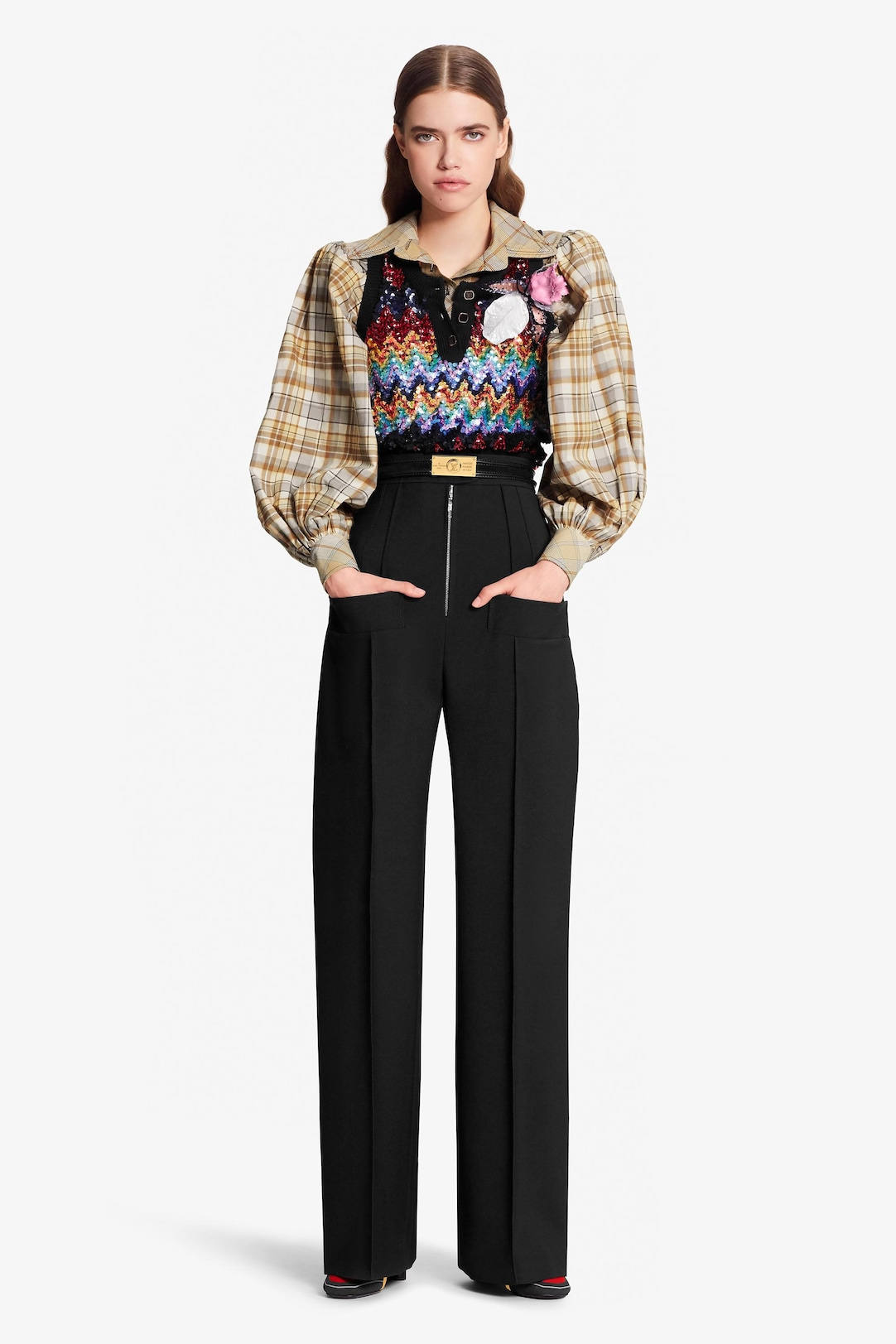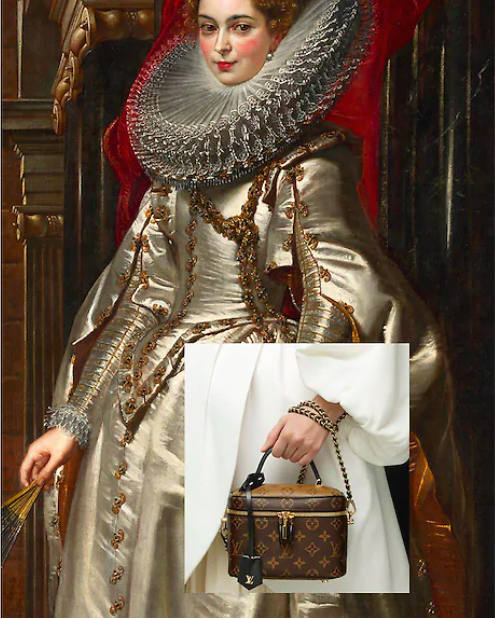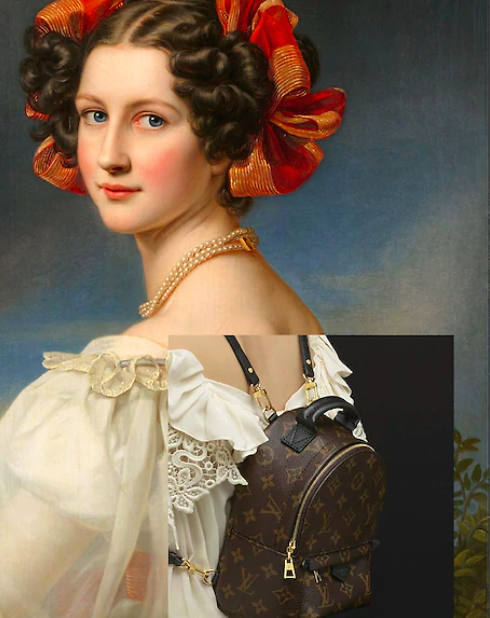
Louis Vuitton: Sustainability Agenda and Action-Plan
As the Covid-19 crisis continues and almost half of the population around the world is constrained to their homes without being able to move around the globe it’s hard to talk about anything else. This crisis is definitely impacting everyone- everywhere, the luxury industry as well, with shops, factories, and ateliers being closed and sales dropping rapidly. Still, many luxury companies are trying to do the right thing in this situation, for example, Louis Vuitton our focus for this article.
The heritage French luxury brand transformed its Parisian workrooms in recent weeks to produce desperately needed medical gowns. All the finished products are donated to staff working non stop in one of the six Parisian hospitals that are dedicated to treating patients suffering from the coronavirus. The patterns and materials the brand developed and used for these products have been approved by the healthcare system and bodies and are extremely helpful in these times of need.
Louis Vuitton is a fashion house and luxury retail company founded in 1854 by Louis Vuitton. The label’s LV monogram, one of the most iconic patterns, appears on most of its products, ranging from luxury trunks and leather goods to ready-to-wear, shoes, watches, jewelry, accessories, sunglasses and much more. Louis Vuitton is one of the world’s known international fashion houses. The company operates in 50 countries with more than 460 stores worldwide, mainly their own stores. It was in 1987 that the creation of LVMH was founded. Moët et Chandon and Hennessy, leading manufacturers of champagne and cognac, merged respectively with Louis Vuitton to form the luxury goods conglomerate under the same name as known until today. Since 1987 the conglomerate acquired many other fashion, beauty, and leisure companies, owning today 75 Maisons and became the biggest luxury conglomerate.
According to the brand’s CEO and chairman Michael Burke great design, sustainability, and good business goes hand in hand and this is the opening of the company’s sustainability section. Louis Vuitton as part of the LVMH Group underpinned in 2012 by LVMH’s Initiatives for The Environment (LIFE), which set goals to accelerate environmental progress across the entire value chain to be achieved already this year. The group is focusing on pioneering initiatives in biodiversity and providing tangible elements about its environmental performance as well as ambitions in products’ eco-design, circular economy, and energy consumption.



LIFE PROGRAM
The LIFE program makes environmental imperatives an integral part of management processes creating new environmental management tools while encouraging innovative practices. The executive committee of each Maison is responsible for implementing this program, as an integral component in the strategic business plan. Each Maison establishes an action plan focused on strategic priorities, along with indicators to track performance.
At the end of September 2019 LVMH organized an event in Paris sharing their environmental agenda, future actions, and new commitments including a brand-new Animal-based Raw Materials Sourcing Charter. The new charter is based on a scientific approach and addresses the environmental, social, and ethical issues faced by the fur, leather, wool and feather industries- focusing on a new and clear frame of reference and sourcing rules. The charter was launched as a result of the group’s high demand for fur and leather. Addressing environmental concerns associated with fur leather, exotic leather wool, and feathers. The main focus areas are traceability of origin and in-depth knowledge of the supply chains of the materials. Farming and trapping conditions with the aim of continuing to implement the most stringent certifications in animal welfare. Respect for workers, the environment, and biodiversity throughout the different stages of each of the animal-based supply chains.
By 2025 the group and all its Maisons will ensure full traceability back to the country of origin or even to the farm for farmed fur. As well as compliance with the most advanced animal welfare standards for 100% of raw materials and a reduction of the environmental impact of the processing of all animal-based materials while improving the livelihoods of local populations. The LVMH standard for responsible crocodilian leather sourcing also joined the new charter.
At the same event, LVMH highlighted that renewable energy represented already 27% of their energy mix back in 2018 so the 2020 group target of 30% renewable energy is likely to be exceeded. Also presented was the Carbon Fund that uses the funds collected to directly finance CO2 reducing projects in the group’s Maisons. In 2018, 112 projects were financed. According to the group’s evaluations in 2018, 91% of their waste was reused, recycled, or transformed into energy.
LVMH started few new strategic partnerships to support its sustainability efforts, contributing to Amazon emergency aid and preservation alongside France’s contribution, in the urgent efforts to fight fires in the rainforest. Part of the amount is directed to a joined project between the group and UNESCO to improve the resilience of affected ecoregions with a special focus on fire management.





Another partnership with Solar Impulse Foundation determined to find innovative and efficient clean technologies to combat environmental issues like reduction in energy consumption in the group’s boutiques, the production of renewable energy, and alternative ways of transport. The last partnership is integrating the ecological accounting chain, which is carried by the AgroParisTech Foundation. The aim is to find innovative ways to make environmental considerations an integral part of all management decisions.
The main LIFE 2020 objectives relevant to all LVMH Maisons are reducing 10% of the product’s environmental footprint all along the entire lifecycle of the product, by improving the Environmental Performance Index. The group will reduce its CO2 emissions by 25% this year. LVMH aims to monitor the traceability of its raw materials while preserving natural resources and applying the highest standards across 70% of procurement chains, and across 100% of procurement chains by 2025. All sites (including more than 300 of the group’s own workshops and production sites worldwide) will reduce at least 10% in their environmental performance indicators like water and energy consumption and waste production.
MORE THAN 200 AUDITS PER YEAR
Louis Vuitton is committed to the careful monitoring of its supply chain, starting with its suppliers. All suppliers sign the LVMH code of conduct and Louis Vuitton conducts more than 200 audits per year to verify that suppliers meet high social and environmental standards. The brand is in the process of implementing a responsible sourcing program for all its raw materials. Covering compliance, traceability mapping, the most stringent certifications, and a consistent commitment to animal and labor welfare. As of 2018, the brand reached the LIFE 2020 target of 70% of leather goods tanneries becoming Leather Working Group (LGW) certified, the House’s timepiece and jewelry activities have obtained the Responsible Jewelry Council (RJC) certification, and diamonds are Kimberley Process-certified conflict-free.
The brand constantly seeking alternative but equivalent or higher quality with lower environmental footprint raw materials. Using the group’s Eco-Material Library as one of the largest resources within the luxury sector educating creative teams on the use of innovative, eco-friendly materials. As a result of the Maison preservation commitment, there is a focus on processes such as cutting raw materials to continually optimize and limit waste in design and production.
The brand’s products are designed to be repaired and educate consumers to properly care for their items to last longer, even offering care and repair service an outcome of traditional and skilled craftsmanship professionals that respects the brand’s know-how and the use of the raw materials and production techniques. More about the product’s streamlined prototyping processes, through a combination of digital models and 3D printing. Allowing adjustments that are made in real-time and inefficiencies in the supply chain are greatly reduced. A sustainable training on eco-design is shared around the creative team in order to take into consideration the environmental implications of their creations – from the extraction of raw materials to the product’s end of life.
The search for innovative packaging solutions is ongoing in the Maison from sourcing responsible raw materials, the removal of excess packaging, collapsible gift boxes, and the ergonomic use of space in transport in order to reduce the Maison general carbon footprint. The brand’s gift boxes are made from Forest Stewardship Council (FSC) Mix fibers, the paper comes from certified virgin and recycled fibers from well- managed forests. The felt dust bags protecting products are made with cotton sourced from the Better Cotton Initiative (BCI). The brand invites its consumers to reuse or sort packaging that able to be recycled in the right channel to limit the brand’s waste and usage of materials.
Louis Vuitton’s CEO Michael Burke believes that “the most eco-efficient way to reduce global carbon footprint is to ship the right product to the right store at the right time“. In order to address this, Louis Vuitton has become the first Global Green certified supply chain. Not only has the House reduced the transported volumes and the distances covered, but the implementation of real-time retail analysis allows Louis Vuitton to better anticipate product needs in stores and prevent unnecessary transport. The selection of transportation and logistical partners was initially based exclusively on the environmental commitment of the providers and their capacity for innovation and progress.
MINIMIZING BY-PRODUCTS
The brand is directed to minimize by-products and, finding optimal end-of-life solutions for all their materials. Adopting a specific reuse-processing technique, to give a second life to very precious materials such as gold, leather, wood, textiles, and more. Donating to associations from the circular economy such as ‘La Réserve des Arts’ in France or ’MFTA’ in New York, fashion and design schools and even the implementation of material exchange between workshops encourage responsible management of materials. One of the latest projects, named “Cuirs Patrimoine”, consolidates obsolete stocks of leather hides for designing new products. The House’s leather goods workshops recover 60% of their leather scraps for re-use or recycling.
The Carbon Fund created by LVMH during the 2015 COP21 Conference, allows the Maison to invest their global carbon tax part to reduce the energy consumption of their own operations rather than compensating for their emissions. The House has been investing heavily in technology such as LED lighting and highly efficient air-conditioning and heating systems for new and renovated stores. As part of this Carbon efficiency program, Louis Vuitton has established an ambitious eco-building strategy roadmap in order to reduce the environmental footprint of all sites, both corporate and in the store network. All architects receive store environmental guidelines encouraging consideration of sustainability at the design stage.
Louis Vuitton sustainability action plan is tightly connected to LVMH, the group that surrounds the brand’s, agenda partnerships, and initiatives. This piece is based on sustainable information, statements, and plans shared by Louis Vuitton themselves and LVMH.








